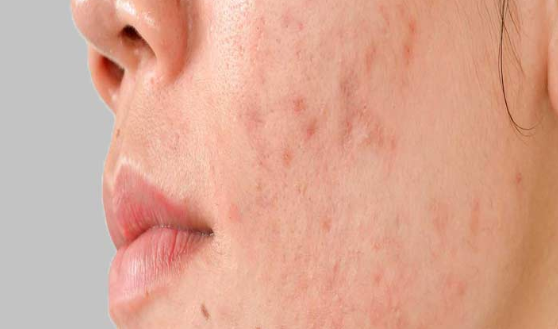Pigmentation is a medical term that is caused by the deposition or production of a skin darkening agent called melanin by the skin cells, melanocytes. Environmental factors, sunlight, ultraviolet rays, hormonal changes, and intake of some medications may contribute to pigmentation changes. ‘Pigmentation can range from freckles, sunspots, and age spots to melasma and can occur on the face or body including the lips, shares, Dr. Rasya Dixit, the best dermatologist in Bangalore, the possessor of the leading dermatology clinic in India, Dr. Dixit’s Cosmetic Dermatology Clinic.
Types Of Pigmentation
1. Melasma – Melasma is a common acquired disorder of hyperpigmentation that causes brown patches on the face, particularly on the malar areas, chins, cheeks, forehead, and upper lips. It is caused by excessive production of melanin due to hormonal imbalance and during pregnancy.
2. Freckles – Freckles are light-brown or flat small tan spots on sun-exposed skin after repeated exposure to the sunlight. They are commonly seen on the faces of red-headed, poorly pigmented individuals. Common freckles are quite harmless and rarely develop into severe skin cancer. Most of the freckles are generally uniform in color but may vary in color- they can be yellowish, reddish, light-brown, or black.
3. Sunspots – Sunspots are pigmented spots with a clearly defined edge. They may occur anywhere on the body and vary in color from light brown to black. These spots are caused by UV sun exposure and the degree depends on how much UV light these melanin pigments are exposed to.
4. Post-Inflammatory Hyperpigmentation (PIH) – Post-inflammatory hyperpigmentation is the result of acne, burns, friction, or aggressive treatments such as chemical peels, dermabrasion, laser, and IPL. This type of pigmentation can improve with time and is treatable with topical products.
In most cases, the pigmentation requires treatment that is provided by a skin doctor. Following treatments for pigmentation are performed by Dr. Rasya Dixit, Best skin doctor in Bangalore.
1. Carbon laser peel – Carbon laser peel can be a great way to maintain and rejuvenate the skin. It works by removing the top layer of the skin resulting in new healthy skin. The procedure is meant to exfoliate the skin, decreasing the pore size, smoothening out the skin, brightening the complexion, and making the skin softer and looks more radiant. It removes pigmentation in the skin using the power of lasers and carbon, which develops for a different number of reasons including sun damage, inflammation, hormonal changes, and acne.
2. Laser – Laser treatment for pigmentation removal is the ideal way to correct pigmentation and other common skin concerns. This is one of the most advanced treatments for removing unwanted pigmentation on the skin such as freckles, sun spots, age spots, and pigmented birthmarks. Laser treatment uses targeted beams of light to reduce pigmentation. It does not affect the surrounding tissues or remove the normal skin color during the treatment.
Laser has the potential to treat stubborn pigmentation by giving low-energy laser, which leads to a decrease in the melanin in the superficial layers of the skin. This treatment works by controlling and managing the pigmentation present in the skin and by removing the excess melanin pigment naturally. Furthermore, the laser promotes the production of collagen and elastin, which rejuvenates the skin texture and provides instant brightness to the face. The laser selectively targets pigmentation and results in improved skin tone. This treatment offers promising results and makes the skin look brighter, plumper, even-toned, and rejuvenated.
3. Chemical peels – Chemical peels are commonly used to treat pigmented acne scars. A chemical peel is a strong acid that works by removing the top layer of the skin, allowing new and healthy skin to form. Some chemical peels are mild enough to be used at home, but the dermatologist in Bangalore Dr. Rasya Dixit provides a stronger solution with more dramatic results, making it a great method for maintaining and rejuvenating the skin. These peels are also used to lighten the hyper-pigmented acne scars. Chemical peels like glycolic peel, retinol peel, and TCA peel remove the outer layer of old skin by using a special chemical solution. The new skin that replaces the old skin is usually smoother and less scarred.
Tips To Manage Pigmentation
Wash face twice a day. Wash the skin as soon as possible after sweating, especially when wearing a hat or helmet, which can make acne worse.
Be gentle with skin. Use gentle products that are alcohol-free. Avoid products that irritate the skin, such as astringents, toners, and exfoliants. Scrubbing the skin can make pigmentation worse. The best way to manage pigmentation is to optimize pigmentation treatment with a good skin-care routine, a healthy diet, and an appropriate treatment regimen.
Tanning damages skin and makes the skin very sensitive to ultraviolet (UV) light. Using tanning beds increases the risk for pigmentation and melanoma, the most deadly form of skin cancer.
Skin is the most exposed body organ and must be taken with proper care. If one is suffering from any skin issues, they must take the help of a dermatologist to provide it with the care it requires for maintaining good health. For more information about other skin issues treatment and pigmentation, contact the skin expert in Bangalore, Dr. Rasya Dixit.




No comments:
Post a Comment